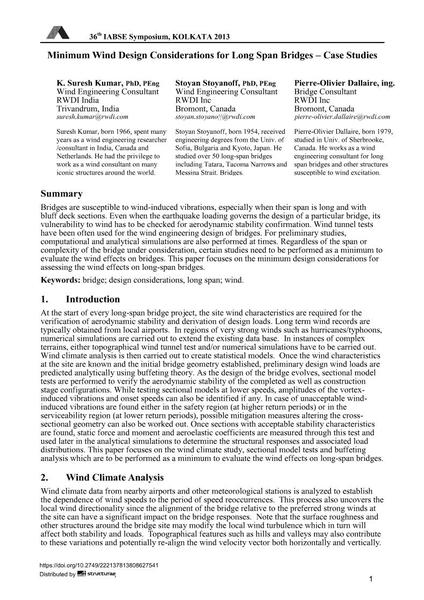Minimum Wind Design Considerations for Long Span Bridges – Case Studies

|
|
|||||||||||
Détails bibliographiques
| Auteur(s): |
K. Suresh Kumar
Stoyan Stoyanoff Pierre-Olivier Dallaire |
||||
|---|---|---|---|---|---|
| Médium: | papier de conférence | ||||
| Langue(s): | anglais | ||||
| Conférence: | IABSE Symposium: Long Span Bridges and Roofs - Development, Design and Implementation, Kolkata, India, 24-27 September 2013 | ||||
| Publié dans: | IABSE Symposium Kolkata 2013 | ||||
|
|||||
| Page(s): | 1-8 | ||||
| Nombre total de pages (du PDF): | 8 | ||||
| Année: | 2013 | ||||
| DOI: | 10.2749/222137813808627541 | ||||
| Abstrait: |
Bridges are susceptible to wind-induced vibrations, especially when their span is long and with bluff deck sections. Even when the earthquake loading governs the design of a particular bridge, its vulnerability to wind has to be checked for aerodynamic stability confirmation. Wind tunnel tests have been often used for the wind engineering design of bridges. For preliminary studies, computational and analytical simulations are also performed at times. Regardless of the span or complexity of the bridge under consideration, certain studies need to be performed as a minimum to evaluate the wind effects on bridges. This paper focuses on the minimum design considerations for assessing the wind effects on long-span bridges. |
||||
| Mots-clé: |
vent pont
|
||||
